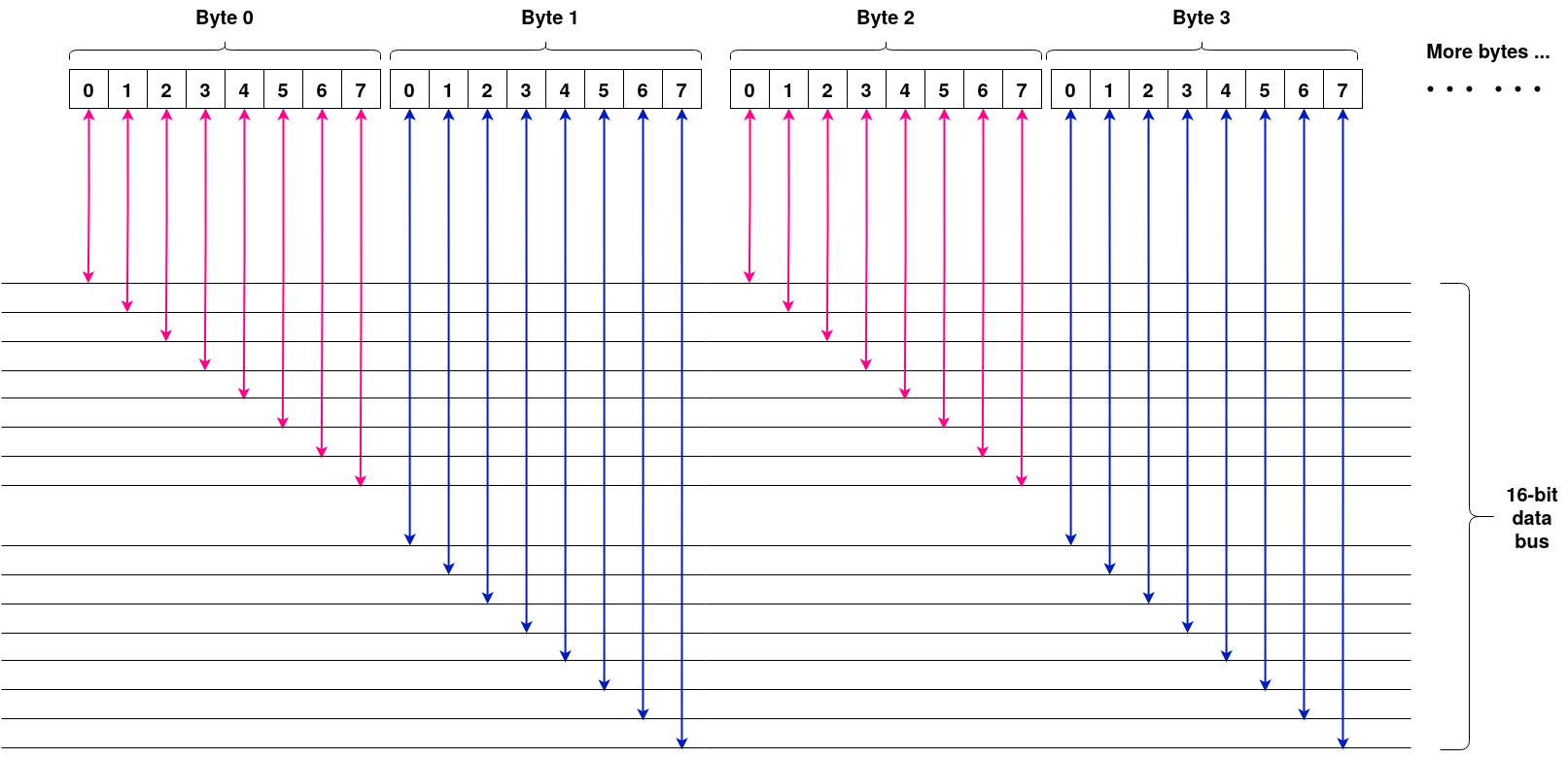Understanding why memory alignment is needed from the hardware perspective
by yaobin.wen
To understand why memory alignment can make the operation faster in the first place, we need to understand how the hardware is implemented.
The memory
The smallest unit of information storage in the memory is one bit, i.e., a value of 0 or 1. On the hardware level, an S-R latch is the hardware that’s used to store one bit of information.
The smallest addressable unit in the memory is one byte, i.e., an array of 8 bits. Every byte is assigned with an address. To read/write a byte, the CPU must specify the corresponding address of that byte and read/write it as a whole. In other words, a byte is also the smallest readable/writable unit of information. On the hardware level, eight S-R latches are put together to implement one byte of storage.
System buses
On the motherboard, CPU and memory are separate pieces of hardware. They are connected via the system buses that consist of three buses:
- The address bus that carries the address of the byte(s) to be read/written.
- The data bus that carries the bytes that are read/written.
- The control bus that carries the command about what operation (e.g., read/write) to perform on the memory.
Every bus is just a group of wires. Each wires has two states, 0 or 1, that represents one bit of information. The width of a bus is the number of wires that that bus contains. Width matters. For example:
- An address bus of width 33 (i.e., contains 33 wires) can represent \(2^{33} \div 8\) different addresses (“\(\div 8\)” is needed because only a byte, or 8 bits, has an address), or 8 GB.
- A data bus of width 32 (i.e., contains 32 wires) can carry 32 bits, or 4 bytes, of data in one sitting. Therefore, its data transfer efficiency is twice as much as a data bus of width 16.
Therefore, for the CPU and the memory to exchange data, they both must be wired to the system buses:
- The address bus is used to specify which part of the memory is to be accessed.
- The data bus is used to carry the data to be exchanged.
- The control bus is used to specify the operation to be performed, e.g., read/write.
Wiring
Let’s use a data bus of width 16 as the example for discussion.
When the memory is wired to the data bus, they are wired this way:

From the diagram, we can see that data bus can transfer the data in the byte 0 and the byte 1 together, and the data in the byte 2 and the byte 3 together. The byte 2 and the byte 3 cannot be transferred together, because the byte 2 is wired to the wires 8 ~ 15 on the data bus, while the byte 3 is wired to the wires 0 ~ 7 on the data bus. The order they should be accessible (i.e., byte 2 followed by byte 3) is opposite to the order they are wired to the data bus (i.e., byte 3 is wired to the lower 8 wires while byte 2 is wired to the higher 8 wires).
As a result, if the CPU needs to get byte 1 and byte 2 as a pair, it needs to fetch them in two cycles:
- In the first cycle, the CPU fetches byte 0 and byte 1 because they can be fetched together. Then the CPU discards byte 0.
- In the second cycle, the CPU fetches byte 2 and byte 3 because they can be fetched together. Then the CPU discards byte 3.
- Then the CPU combines byte 1 and byte 2 as the result.
This is the reason on the hardware level that memory alignment is recommended: if you make sure the data you want to access is at the address of 0, 2, 4, etc., the data can be accessed in fewer cycles than the misaligned data.
Tags: Tech - Hardware